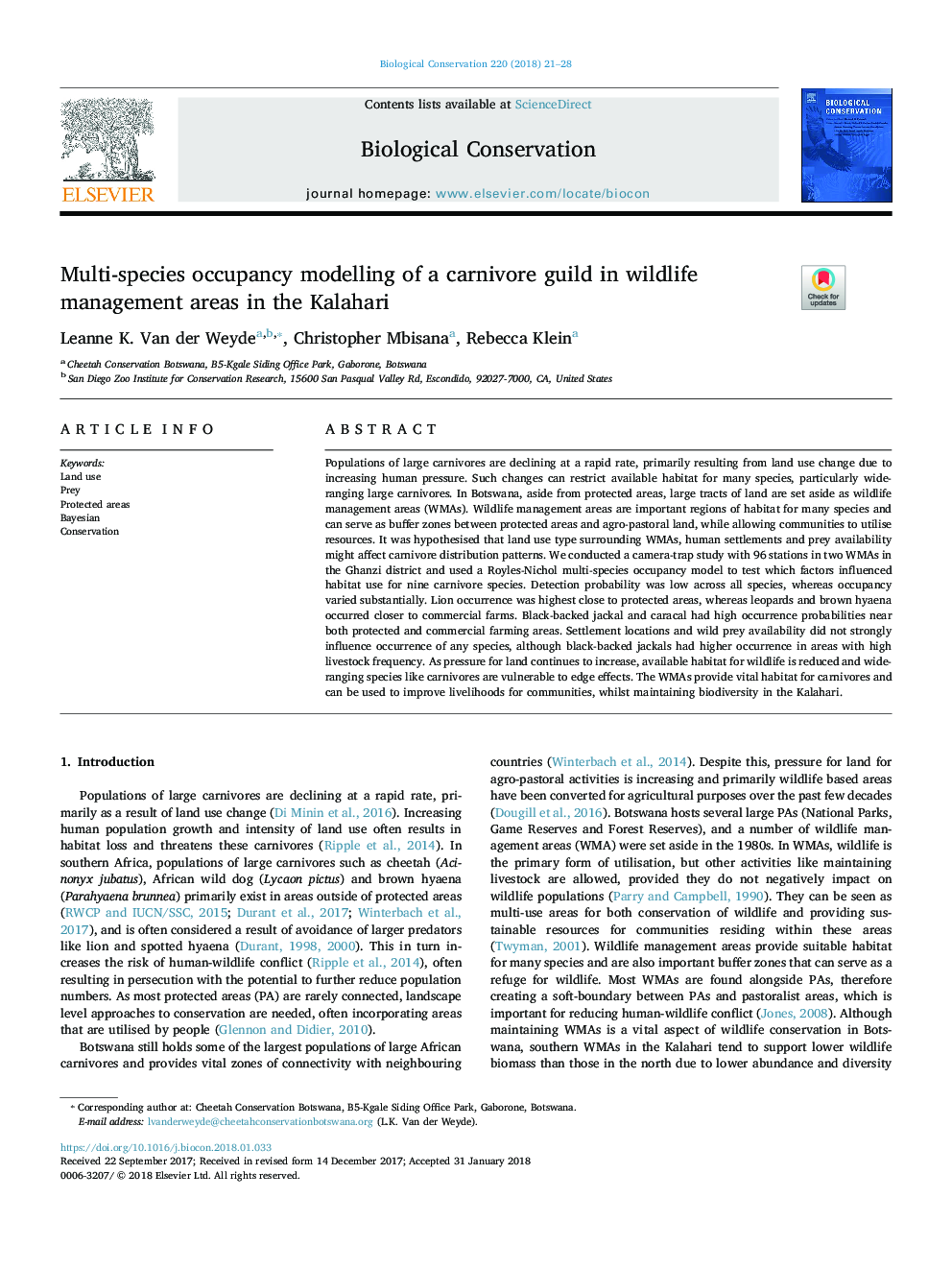| کد مقاله | کد نشریه | سال انتشار | مقاله انگلیسی | نسخه تمام متن |
|---|---|---|---|---|
| 8847362 | 1617885 | 2018 | 8 صفحه PDF | دانلود رایگان |
عنوان انگلیسی مقاله ISI
Multi-species occupancy modelling of a carnivore guild in wildlife management areas in the Kalahari
دانلود مقاله + سفارش ترجمه
دانلود مقاله ISI انگلیسی
رایگان برای ایرانیان
کلمات کلیدی
موضوعات مرتبط
علوم زیستی و بیوفناوری
علوم کشاورزی و بیولوژیک
بوم شناسی، تکامل، رفتار و سامانه شناسی
پیش نمایش صفحه اول مقاله

چکیده انگلیسی
Populations of large carnivores are declining at a rapid rate, primarily resulting from land use change due to increasing human pressure. Such changes can restrict available habitat for many species, particularly wide-ranging large carnivores. In Botswana, aside from protected areas, large tracts of land are set aside as wildlife management areas (WMAs). Wildlife management areas are important regions of habitat for many species and can serve as buffer zones between protected areas and agro-pastoral land, while allowing communities to utilise resources. It was hypothesised that land use type surrounding WMAs, human settlements and prey availability might affect carnivore distribution patterns. We conducted a camera-trap study with 96 stations in two WMAs in the Ghanzi district and used a Royles-Nichol multi-species occupancy model to test which factors influenced habitat use for nine carnivore species. Detection probability was low across all species, whereas occupancy varied substantially. Lion occurrence was highest close to protected areas, whereas leopards and brown hyaena occurred closer to commercial farms. Black-backed jackal and caracal had high occurrence probabilities near both protected and commercial farming areas. Settlement locations and wild prey availability did not strongly influence occurrence of any species, although black-backed jackals had higher occurrence in areas with high livestock frequency. As pressure for land continues to increase, available habitat for wildlife is reduced and wide-ranging species like carnivores are vulnerable to edge effects. The WMAs provide vital habitat for carnivores and can be used to improve livelihoods for communities, whilst maintaining biodiversity in the Kalahari.
ناشر
Database: Elsevier - ScienceDirect (ساینس دایرکت)
Journal: Biological Conservation - Volume 220, April 2018, Pages 21-28
Journal: Biological Conservation - Volume 220, April 2018, Pages 21-28
نویسندگان
Leanne K. Van der Weyde, Christopher Mbisana, Rebecca Klein,